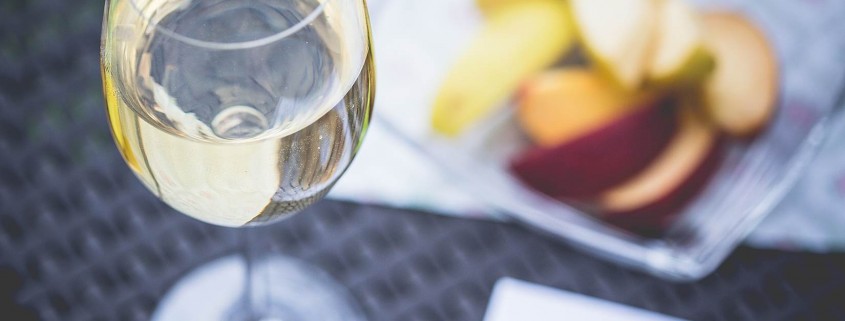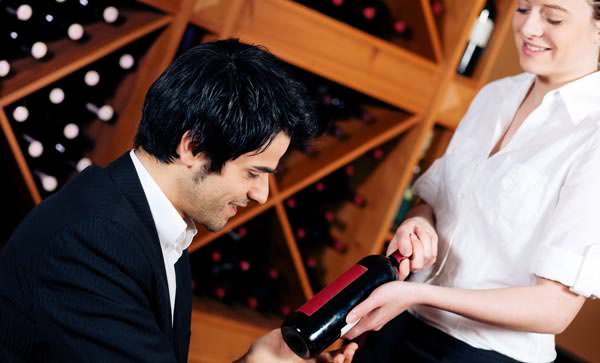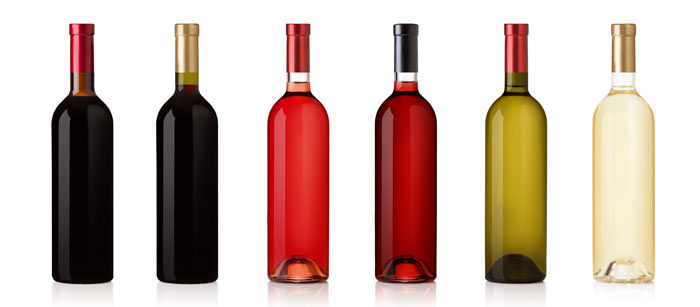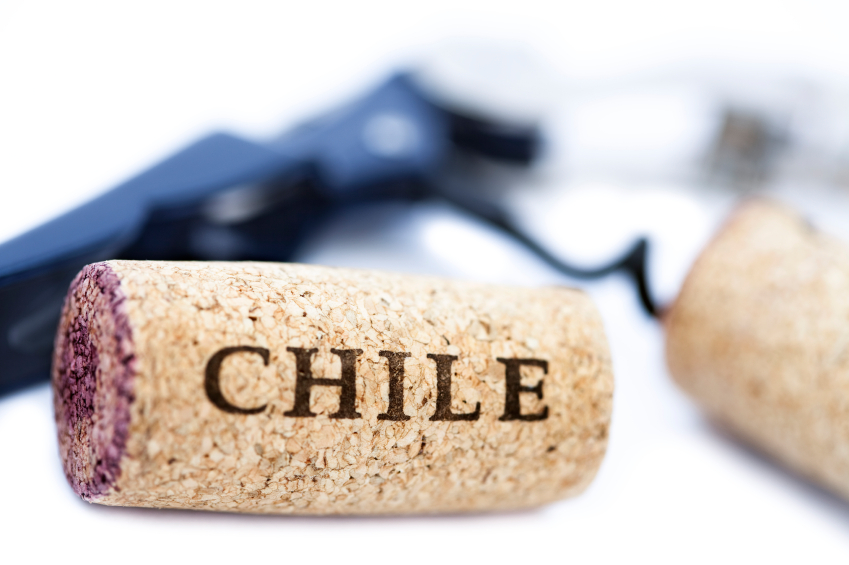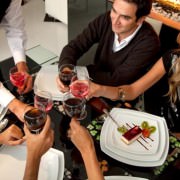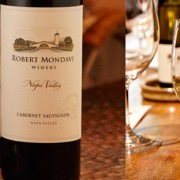5 Smart Ways to Freshen Up a Stale Wine List
Trying to keeping pace with the wine market can make you dizzy. Parsing between trends and fads, personal taste and market preference; it’s enough to make you pour a glass for yourself. For many customers, wine can be intimidating and confusing, but it’s also ever-present and familiar. Modernizing a wine program can be just as confusing but necessary. As a restaurant operator, you have to step outside your comfort zone and update your wine program to make sure your menus excite and appeal to your guests.
But where to start when you’re updating your wine list? Well, we’ll help you out.
These 5 areas of your wine program and operations are prime places to make changes. These changes are simple to implement, and they will do wonders to modernize your program.
Jump to different sections:
Customer’s want wine choices, but also need guidance
What keeps a restaurant running? Your customers. So you must keep them in mind, and understand their preferences, when renovating your wine list.
One of the biggest things to be mindful of when considering wine and your customers, wine can be intimidating for consumers. This intimidation can have a direct impact on your wine sales.
A recent report from Datassential details the affect how intimidation affects diner’s choices.
“The biggest finding in [the wine category] is that consumers are less likely to order wine, a pattern that other industry observers have confirmed. “I think their lack of knowledge prevents them from taking a risk and ordering a full bottle,” [Jennifer Aranas, Datassential Project Manager] says. The solution for operators, of course, is to offer more choices by the glass.” (emphasis mine)
This is an important finding to consider when revamping your list. Your restaurant must give guests options when it comes to ordering wine, but those options must also be backed by education and information about those wines.
By-the-glass
A simple way to provide more options is to add more wines to your by-the-glass list. This way, you’re giving guests a casual way to try a wine style or varietal they’ve never had before. It’s also a fun way to be playful and adventurous with your wine offerings. Customers are more willing to try a new wine if they can order it by the glass. A glass is less commitment than a bottle. Depending on the number of covers your dining room does, consider having 15 or more glass pour options.
Often you may be able to get better pricing or discounts from your wine vendors as well by including their products on your glass list. Be sure to ask your vendor if they can reduce your case price.
Building your glass list opens up a new world of options for both guests and the restaurant.
Wine Flights
A cool way to captivate your customers with a great experience is to offer them wine flights. Flights give guests the chance to try multiple wines at once, but in smaller quantities. This is an interactive way to educate drinkers, and to let guests find out what flavors they like in wines.
Be open with wine flights. Allow guests to choose different selections. But also be the authority on wine for your guests. Assemble wines that work well together, and have a specific relationship to one another. Let your guests know why each wine was selected.
A great promotion for wine flights is to give guests a discount if they purchase a bottle of one of the wines in their flight.
Flights are a fun way for curious diners to get great value from a restaurant. It might turn a guest onto a new wine they wouldn’t have normally tried, and that can turn into bigger sales in the future.
Loyalty Program
Loyalty programs can function in a few different ways. The most engaging programs reward customers for their repeat business with an exclusive experience. Gift certificates are great, and reduced pricing is always appreciated, but loyal customers become lifelong guests when they are given a unique experience.
Create a loyalty program where avid wine drinkers are rewarded by receiving hand selected bottles picked by your restaurant. Base these selections on what the customer’s preferences are. Also, add in new varietals that the customer may not have tried.
A great way to think about your wine program is the way direct to consumer wine clubs are creating unique value for their customers.
Education
Consumer education can be a huge influence on the success of your wine program. Remember the quote above, “lack of knowledge prevents [guests] from taking a risk and ordering a full bottle”?
When diners have more information, their risk in ordering is minimized. Make sure your servers are well-trained and knowledgable about your wine program. Servers should be guiding guests to make better choices. This guidance can be demonstrated in two-ways: it could be up-selling your customers, or it could be adding value to their experience by turning them on to a great wine they wouldn’t have considered. As a customer, nothing is better than feeling like you got the inside scoop on a great deal.
Use your menus as a way to educate customers. Digital wine menus are a great resource for creating menus that offer loads of information.
Don’t up-sell; add value.
Do you want drive revenue with your wine program? Visit Uncorkd to learn how digital wine and beverage menus can re-shape your beverage program.
Develop a focus for your wine program
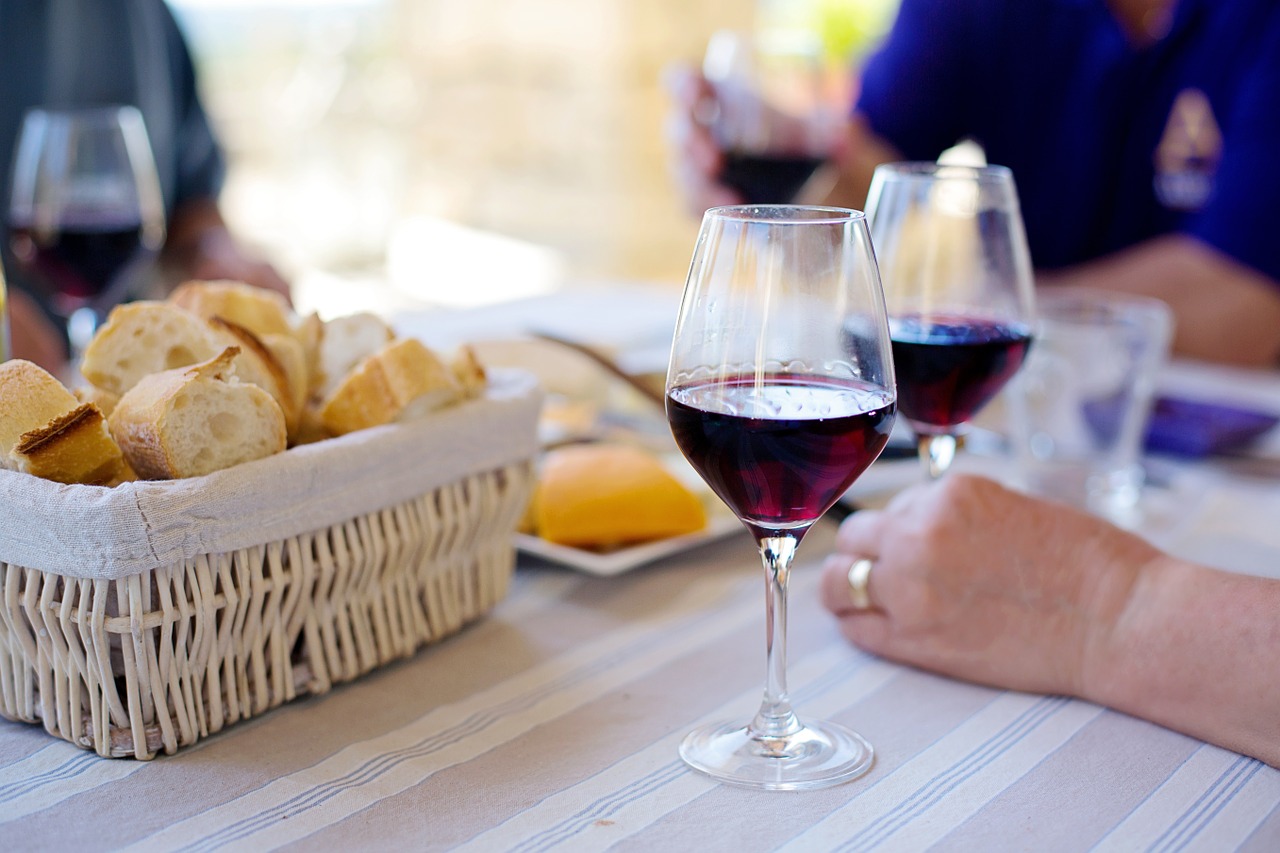
Find a focus for your wine program and run with it
We’re going to do a small exercise. This minor mental calisthenic will highlight the importance of focus in your wine program. Ready? 1…2…3…GO!
What’s the mark of a good wine program? A point-of-view.
How do you fulfill a point-of-view? Making focused selections that represent this view.
What’s the point of a point-of-view? It gives your wine program authority based on specialization.
Why is authority good for a wine program? Because it gives customer’s confidence that whichever wine they choose, it’s on your wine list for good reason, and will offer a specific quality that’s unique.
Finally? Point-of-view is a consistent thread that ties your wine program together. After establishing a point-of-view, it will be easier to curate your wine list, and your distributors will know which wines you want.
There, we’re finished. Take a breath, kick your feet up, and relax; our exercise is done for the day.
One way to think about focus is that of a French or Italian restaurant that offers wines exclusively from the country their cuisine hails from. This method has been very successful, but you must have a large and exhaustive list to match a focus this large. That means curating a really monstrous wine list.
But there are other ways to focus your wine program that keep things simple and selective.
A study on the way meat and cuisine is marketed shows that marketing a cuisine like Japanese or Mexican food isn’t as effective as promoting specific items like ramen noodles or tacos. The difference? It’s in the nuance and focus the item being promoted. This thinking should be applied to how you promote your wine program. Promote a nuanced focus that creates a point-of-view for your wine program, but doesn’t restrict its appeal to a broad customer base.
Tips for creating focus
There are many ways you can focus your wine program. But it must be something your wine director is passionate about. This list of restaurants shows the different focus and highlights of their wine programs. Remember, a focus doesn’t have to exclusive. You can still put wines on your list that don’t fit into these categories, but a focus tells your guest that there is something unique to your restaurant, something that they can’t get anywhere else.
| 1. | Natural Wine: | Roman’s – Italian natural wine | Lula Cafe – Natural wine, small producer |
| 2. | Local & Small Producer: | Babica Hen Cafe – Oregon wine, small producer | Bobo – Family owned, sustainable wine practices |
| 3. | Regional Focus: | A16 – Southern Italy and Sicily | Deseo – South American Winè |
| 4. | Terroir/Producer: | 610 Magnolia – Terroir, producer influence | laV Restaurant – Producer’s catalogues |
| 5. | Big Value Wines: | DB Bistro Moderne – Extensive list, affordable options | Bar Bouloud – Affordable wines, Burgundy and Rhonè |
Offer different styles to compliment dinner courses, season, and mood
Wine preferences are changing. Sometimes they are cyclical, sometimes a new style gains greater popularity than ever before. It’s important to keep up with new styles of wine that are popular. You shouldn’t simply follow trends, but do be aware of what consumer preferences are.
Sparkling wine is becoming a popular by-the-glass option
Take look at sparkling wine’s growth in 2015. And the fact that English sparkling wine is beating French heavyweight champagnes in tasting competitions.
In short, bubbly is exploding. And it’s not just one style or region that is responsible for this industry shake-up. No, styles and varietals from all over the world are filling glasses in high number.
The most popular?
- Champagne
- Prosecco
- Cava
- Rosé (also great to serve as a still option)
You should have at least two sparkling wines as a glass pour option and often more (think one Champagne, one sparkling rosé, one additional other sparkling). Often we think of sparkling wines as fitting for celebrations, but they’re becoming more popular as everyday drinking wines. It’s a great way to start a meal, and is actually a wonderful apéritif that can spark the appetite. Want to get a little bit wild? Consider one of the newer trends, decanting Champagne.
Red blends are becoming popular with millennial wine drinkers
Red blends have always been popular. Historically, some blends are the most sought after and expensive wines, think of a vintage Bordeaux or Chateauneuf-du-Pape. Even California-made blends based off those ruby French gems, like meritage or Rhone-style, are regarded as some of California’s best products.
But the new blend trend bucks tradition. Where standard blends are constructed of traditional grape pairings, many new and popular blends pair grapes that have never shared a bottle before. To note the growth of these new labels, off-premise sales of red blends grew by 6% month-to-month at the end of 2015.
The appeal to young drinkers is about taste and quality. Millennial’s are notoriously indifferent to a label’s pedigree: their concern lies with a producer’s story, the wine’s value, and most importantly, the wine’s taste.
Traditional red blends take root in the region of semi-dry to dry, but newer blends have a much broader range. Some of the most popular labels are big and fruity, with generous amounts of residual sugar that adds notable sweetness to wine.
It’s important to note the range of these wines, because you must be aware of where the wine you’re consider falls, and how that will work on your menu.
Dessert and fortified wines are becoming popular again (sort of)
Sherry and port are often thought of as wine options reserved for the early bird dinner hour. This is of course, unless you are following wine and beverage industry news. Wine writers would have you believe the gilded age of sherry has returned.
Both views hold a bit of truth. and bit of pessimism or optimism, depending if your sherry glass is half empty or full.
Fortified wines, specifically sherry, are seeing both a decline and an increase in sales and exports. Basically, the sweeter styles of sherry are becoming less popular. The decline of sweet sherry like cream or pale cream is having the biggest impact on the overall sales of sherry. Hence the thought that sherry is dead.
On the other hand, the rising popularity of Spanish dry styles like fino or manzanilla, gives sherry enthusiasts hope for the future.
The average age of sherry and port drinkers is also dropping. Younger drinkers are helping grow sales of dry styled sherry, specifically the Spanish varieties.
As small batch production and regional fare are becoming popular consumer preferences, provincial producers from areas like Jerez in Spain and Douro in Portugal are finding a new fanbase thanks to renewed interest concentrated in American and European cities.
If you’re adding sherry to your menu, stick with drier varieties that can be enjoyed with food, not only as dessert.
Utilize your wine program in tandem with your cocktail list
A great way to get more out of your wine program is to do more with cocktails.
Champagne cocktails can be a big hit, especially in the summertime or if you have patio dining.
Part of the sherry revival is due in part to it’s use as a cocktail ingredient.
Explore New Wine Regions
There is a sizable number of American wine drinkers who are turning to drier wines produced in cool climates. The dominance of the California wine style — robust, boozy, fruit-forward –is still the most popular style in the U.S., but there is growing interest in more subtle wines. Many of these wines are produced in old world regions like France, Italy and Spain.
There are many countries, both old world and new, who are producing fantastic wines that are becoming more widely consumed thanks to increased exports and a goal of countries to share their great bounties with the rest of the world. In exchange for money, of course.
These countries had significant growth in wine exports in 2015, and many of these areas are finding placement on menus. One of the big reasons for their new found success is that these regions produce high quality wines that are very affordable and as such, offer great value to the consumer.
These regions had the largest growth in wine exports. Their most popular varietal and/or regions are listed as well.
Spain – Tempranillo, Garnacha, Albariño
Chile – Cabernet Sauvignon, Merlot
Argentina – Malbec, Torrontes
Georgia – Kakheti
Macedonia – Vranec
U.S. regions outside of California
California is the largest producer of wine in the U.S. The golden state is the golden boy of North American wine, producing almost 90% of wine in the United States. The state is the reason the U.S. can compete on a global scale with countries like Italy and France. But there are a few states who produce high quality wines with unique qualities that honor the regions they’re grown in.
Although all 50 states produced wine there are three states that have pulled ahead of the rest of the country.
New York – Sparkling wines, Riesling, Chardonnay, Pinot Noir
Washington – Merlot, Cabernet Sauvignon, Cabernet Franc, Chardonnay, Sémillon
Oregon – Pinot Noir, Pinot Gris, Chardonnay, Tempranillo, Pinot sémillion
New technology can help you do more with your wine program
Coravin systems allow you to do more with your wines
An opened bottle has a short shelf life. Without proper storage, it sprints towards the spoiling line. Too often, an unfinished bottle gets is sent to the kitchen and destined for the sauté pan. But with the Coravin system, wines are preserved. An open bottle will stay fresh for much longer.
The Coravin system has success preserving wines by taking a needle and piercing the cork of a wine bottle. The hollow needle allows wine to flow through it and into an eager drinker’s glass. Once the needle is removed, the cork naturally reseals itself. Pretty cool.
This helps restaurants cut waste. It also gives you the confidence to do more with your wine program. Some of the highlights we mentioned before, like more wine by-the-glass options, unique wine options, and flights, are all made more cost-effective with the Coravin system.
Wine on tap is becoming a serving option for progressive wine programs
Yep. You read that write. Draft wine is becoming more and more popular. Wine on draft hasn’t taken over the industry yet, but it’s becoming prominent enough to take note of.
Parishioners of draft wine preach the virtues of a longer shelf life for kegged wine. Like packaged beer vs. draft beer, wine in a keg is costs less than buying a case of bottles. Wine in a keg also has a smaller carbon footprint than the production of individual bottles. Consider checking out Free Flow Wines to learn more about wine on tap and wine kegs.
Draft wine isn’t for everyone, but it’s certainly worth considering if you’re looking to create a truly progressive program.
Digital wine menus engage members and can increase wine sales
We mentioned above that digital wine menus are a great way to educate your guests.
Digital wine lists and beverage menus allow restaurants to present more information to guests. Without the restriction on space that paper menus have, iPad wine lists can offer tasting notes, wine descriptions, and producer information to diners that make them more comfortable when purchasing a bottle.
Digital menus also reduce the labor time and cost of managing a wine program. To run a flexible, fresh wine program, digital menus allow you to make changes quickly and instantly. This flexibility gives you the ability to do more with your menu. Want to switch up your wine flights? With digital menus, it’s incredibly easy. Best of all, companies like Uncorkd provide a database with information on over 100,000 wines, beers and spirits, including tasting notes, geographical information and pictures.
- 5 Fall Cocktails to Capture the Flavors of Autumn - September 26, 2018
- How Restaurants Can Ignore Sales and Increase Profits - May 9, 2018
- 2018 Spring Wine Trends - April 18, 2018

